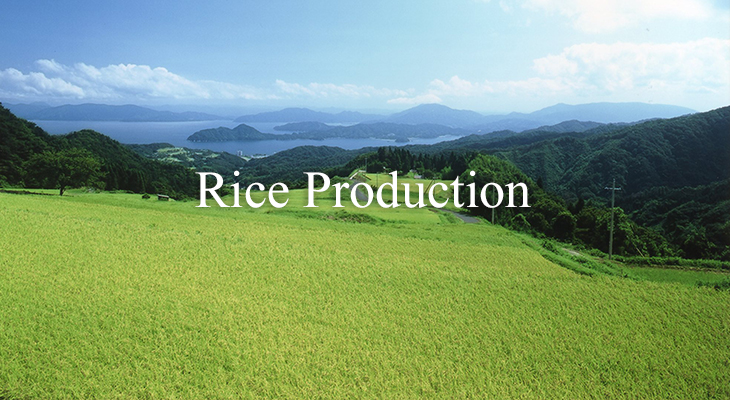
Pesticide-free rice from terraced rice fields
For production of vinegar, we use pesticide-free rice grown in the terraced rice fields of Tango, our hometown. Since 1964, our farmers continue to grow rice without pesticides. We chose terraced paddy fields in mountain villages, where farming is difficult, in order to avoid contamination from domestic waste-water and pesticides used in the surrounding area. The large variation in temperature from day to night and the clean water in this area contributes to the best flavor of rice.
80% of the rice we produce is Koshihikari and the remaining 20% is Gohyaku-mangoku. Gohyaku-mangoku is used for making rice malt.
In recent years, due to the aging and depopulation of farmers, even our brewers join in the rice farming process. In addition, our e-commerce customers, business partners, and many other people join us in planting and harvesting the rice.
Our History of growing pesticide-free rice
Quantity of rice used for vinegar
In general, most manufacturers use old rice, scrap rice, or rice bran as ingredients for vinegar. On the other hand, we use only fresh rice harvested in the fall of the year to make vinegar. The secret of the deep richness and flavor of "Pure rice vinegar Fujisu" lies in using a large volume of rice in vinegar brewing. This can be as much as 200g per liter of vinegar. 200g per liter is five times the volume (40g) required by Japanese Agricultural Standards (JAS) for designated "rice vinegar". "Pure rice vinegar Premium" is made from an even higher concentration of rice, 320g per liter, which is eight times the amount required by JAS. There is no other rice vinegar that uses such a generous amount of new rice of known origin. The process of making Fujisu, fortified with rice flavor, begins with the use of safe ingredients in large quantities.
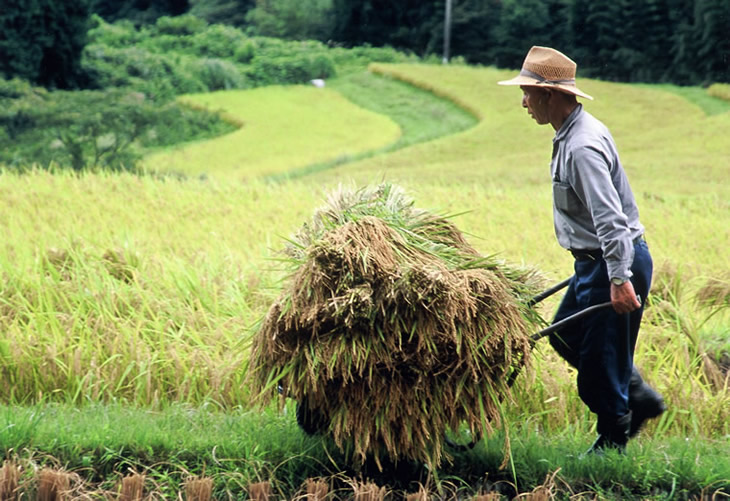
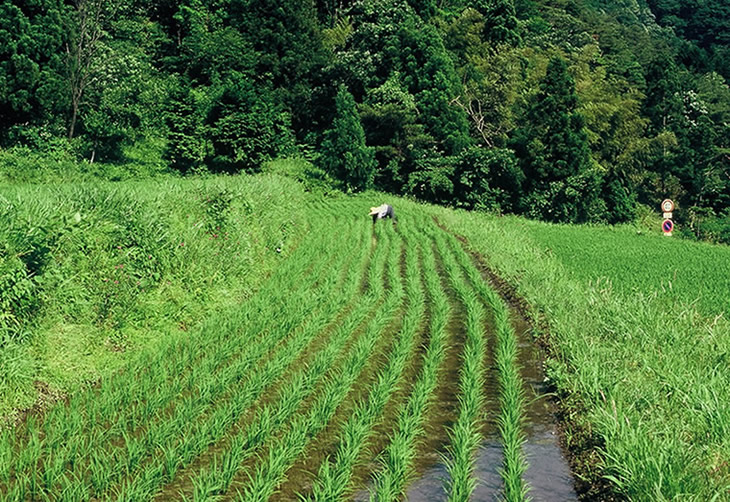
40g = JAS
According to JAS, the amount of rice required to be labeled as rice vinegar is 40g per liter.
Producing vinegar is not possible with this percentage of rice, so manufacturers generally add "brewing alcohol" (also called "ethanol" or "shusei"). It is made from waste molasses derived from corn or sugar cane, Also, it often utilizes genetically modified crops.
120g = Rice vinegar
In order to produce vinegar from rice alone, at least 120g rice per liter is required. If we have 120g of rice per liter, we can make moromi by adding water to it. We then turn that moromi to vinegar.
200g = Pure rice vinegar Fujisu
The amount of rice used in "Pure rice vinegar Fujisu" is 200g per liter, which is five times the industry standard in Japan. The vinegar is not simply sour but also retains the rich flavor of rice.
320g = Pure rice vinegar Premium
The amount of rice used in Pure rice vinegar Premium is 320g per liter, which is eight times the amount required by JAS. Pure rice vinegar Premium has so much flavor from the rice that some people think it contains soup stock. It is mildly sour.
Comparative volume of rice per liter of rice vinegar
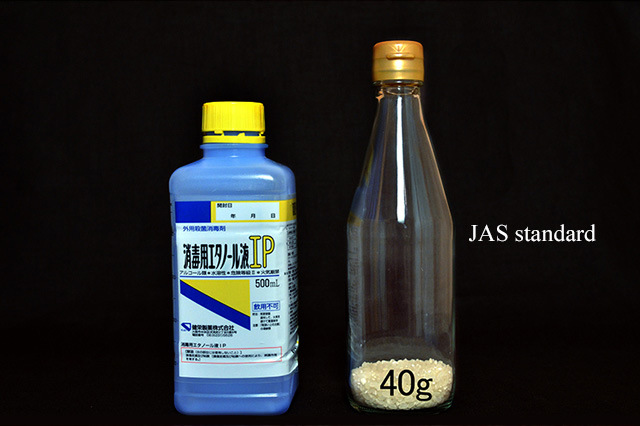
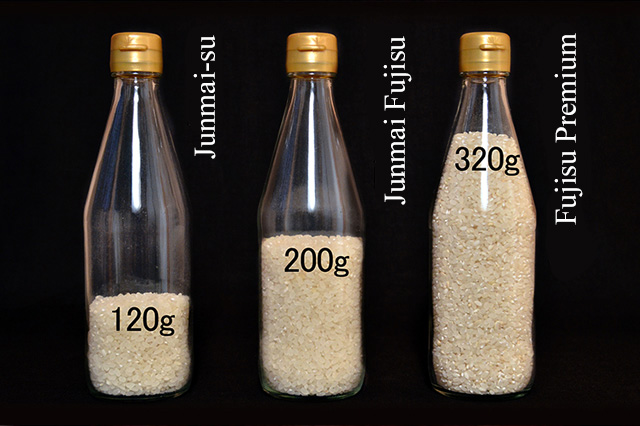
Comparative volume of rice per liter of rice vinegar
![[Fujisu-Vinegar] Iio-jozo, the Japanese Vinegar Brewery](../../images/page/common/spacer.gif)
![[Fujisu-Vinegar] Iio-jozo, the Japanese Vinegar Brewery](../images/page/common/logo.png)




